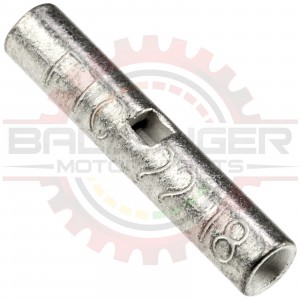Quote:
Originally Posted by Nick M3

What terminals are those? I’m constantly working on wiring.
|
Non-insulated crimp terminals. Basically a barrel sized for whatever gauge wiring you're working with. Peter suggested to me that he's used these for years and they're very robust. I don't like soldered connections for automotive use because they are brittle. Ballenger sells these. So does Digi-Key.
 https://www.bmotorsports.com/shop/pr...3nunug5gc0niq0
https://www.bmotorsports.com/shop/pr...3nunug5gc0niq0
Quote:
Originally Posted by rumatt

I don't know enough about this to ask intelligent questions, so if it's OK I'd like to ask some dumb ones.
1. Is all of this wiring needed because you put the a different engine in the car? Or is some of it needed because you also decided on some custom engine management for performance? Or because you added a turbo?
|
The wiring is needed for the Haltech. Once I had the car running on the stock Mazda ECU I could have just used that as the basis for tuning the engine, but it lacks a few features that I wanted. First being flex fuel capability (E85 or a blend of it). Second being anti-lag for the turbo and third being launch / traction control. I ended up picking the Haltech because it has all of those features natively built-in.
Quote:
|
2. You said the Haltech harness is clearly labeled. Is it specific to the miata engine, and you need to figure out how to connect all the inputs that it needs? Or are there some standards, so you bought a harness designed to connect a Miata-type engine to an RX-8-type chassis?
|
It's a universal harness and a universal ECU. Meaning, it has 'X' available analog inputs, 'Y' available digital outputs, and requires certain voltage and trigger inputs to work, like a crank angle sensor, cam angle sensor, water temp, TPS, etc. The end user determines how many widgets they want to control (like wastegate solenoids, the alternator, etc) and how many additional inputs they want (like oil temp and pressure sensors, fuel composition sensors, etc). The end user then wires them up appropriately, configures them in the software, loads that tune to the ECU and goes from there.